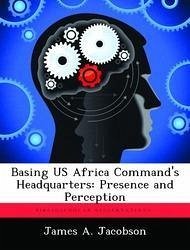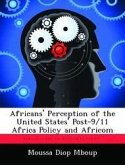As U.S. Africa Command begins its march towards building itself into a fully operational Combatant Command, it is faced with the pressing need to decide where to place its command headquarters. Beginning with President Bush's announcement, the expectation has been to place the command on the African continent. This paper reduces the myriad of basing options to three locations (on the African continent, on the European continent, in the United States) and then evaluates them based on their ability to best enable U.S. Africa Command to achieve its mission and its desired objectives. This paper recommends the U.S. Government not place the command's headquarters on the African continent due to: 1) the pervasive size and nature of the command's headquarters; 2) the narrow perspective of Africa an African-based headquarters would deliver to the command; 3) the support an African-based headquarters would give to the misperceptions associated with the command's stand-up; 4) the instability of African countries' security and stability; 5) the Command's headquarters is a staff organization and does not require that it be on the continent to achieve its mission; 6) a non-U.S. based command limits U.S. policy options executed through the Command; 7) need for America's foreign policy to shed its unilateral approach and demonstrate an ability to understand sensitivities of its African partners. In addition, the European continent does not provide the best location for the headquarters as: 1) a European location potentially limits the policies options available to the command; 2) the Washington DC interagency is the command's second area of focus and thus overwhelms the European proximity benefits. Ultimately, the paper recommends basing the U. S. Africa Command Headquarters just outside Washington DC. The command's presence in Washington DC 'operationalizes' the focus of U.S. Africa policy. This work has been selected by scholars as being culturally important, and is part of the knowledge base of civilization as we know it. This work was reproduced from the original artifact, and remains as true to the original work as possible. Therefore, you will see the original copyright references, library stamps (as most of these works have been housed in our most important libraries around the world), and other notations in the work. This work is in the public domain in the United States of America, and possibly other nations. Within the United States, you may freely copy and distribute this work, as no entity (individual or corporate) has a copyright on the body of the work. As a reproduction of a historical artifact, this work may contain missing or blurred pages, poor pictures, errant marks, etc. Scholars believe, and we concur, that this work is important enough to be preserved, reproduced, and made generally available to the public. We appreciate your support of the preservation process, and thank you for being an important part of keeping this knowledge alive and relevant.
Bitte wählen Sie Ihr Anliegen aus.
Rechnungen
Retourenschein anfordern
Bestellstatus
Storno








